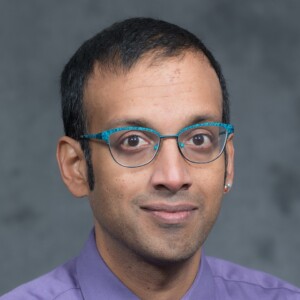Dr Ankur Desai explains how publishing his environmental research openly can help address the climate crisis
10 Jan 2024 by Cait Cullen
- You have recently published a in . Can you tell us about your latest climate research?
We have developed the first international study that looks at .����
Our climate is primarily changing in response to increasing concentrations of greenhouse gases such as carbon dioxide. Fossil fuels are the main drivers for this, and we are very much reliant on land and ocean organisms to offset these greenhouse gases as they absorb on net 50% of this CO2 through photosynthesis and carbon uptake. However, natural carbon offset is highly variable from year to year and without sufficient research, we lack the much-needed information to inform future predictions of land and ocean contributions to the global carbon budget and lakes are an understudied piece of the puzzle.
The method we have used in our research, eddy covariance measurements, have been applied extensively to land mass ecosystems, but not so much to lakes due to several technical challenges. By bringing together observations from locations that have conducted lake eddy covariance observations, we sought to provide insight into what we miss in existing lake carbon flux estimates.
- How did your university support the team?
As the project took several years to reach fruition, we relied on both UW-Madison and the University of Helsinki to act as hosts for Dr. Golub who is one of the lead authors, and to provide resources for communication, collaboration, and data hosting. By placing the synthesized data in a repository early, we also developed new collaborations and projects based on our data.
- What have been the highlights and challenges of your research work?
We had some lengthy debates about what counts as a “lake” for inclusion in the analysis, from which we quickly learned that there isn’t necessarily a clear definition!
- The research was published open access, what made you decide to do so?
This work was meant to be an initial foray into an important question for the carbon cycle community all over the world. We’ve brought together data from various locations including areas where resources may be limited. My hope is that our study acts as a springboard for others to build on this work so that more lakes will be assessed and added, and our data will be analyzed in new ways. Open access ensures that we will reach the broadest audience.
- Why is open access publishing important to you?
Science is fundamentally a collaborative process where we must communicate and debate ideas about the universe and nature. Our collective advances for humanity to better appreciate and benefit from nature can best be done when we share knowledge freely, fairly, and openly, with appropriate attribution and recognition.
- This paper was published as part of a transformative agreement. How did you find out that the University of Wisconsin – Madison had this agreement in place?
I have long regarded Environmental Research letters as a high-quality journal with a broad reach in this topic, so it was an easy choice to submit the paper with them. The fact that our institution has a transformative agreement with the publisher of Environmental Research Letters was a bonus. The transformative agreement meant that we as researchers didn’t have to pay for the article publication charges.
Our library system includes information on these agreements to help us make choices about where to find open access options and how to steward our shared, primarily taxpayer-funded financial resources into publication costs. The transformative agreement meant that we as researchers didn’t have to pay for the article publication charges.
- What would you advise other researchers if they would like to publish their research openly at no cost to them?
For collaborative projects, it is important to make sure all authors are aware of their expectations and intentions for publication, including making data openly available too. In our case, many researchers were sharing data that had never been shared before. Having a clear plan for dissemination and credit where credit is due is important to have contributors feel assured that their work is accounted for.
- Did your research have any funder mandates that you had to comply with?
Many of the sites collect data under research grants that have stipulations on open access for data or publication. We also abide by codes of conduct for inclusive and appropriate communication and safe field work. These are essential to build a supportive research community where everyone feels welcome and valued.
Dr Desai published through a transformative agreement between IOP ������ and the University of Wisconsin Madison (part of the Big Ten Academic Alliance). This agreement enables corresponding authors at the university to publish their work in more than 70 IOP journals at no cost to them. Articles published under a transformative agreement are immediately available and free for everyone to read. Find out more at